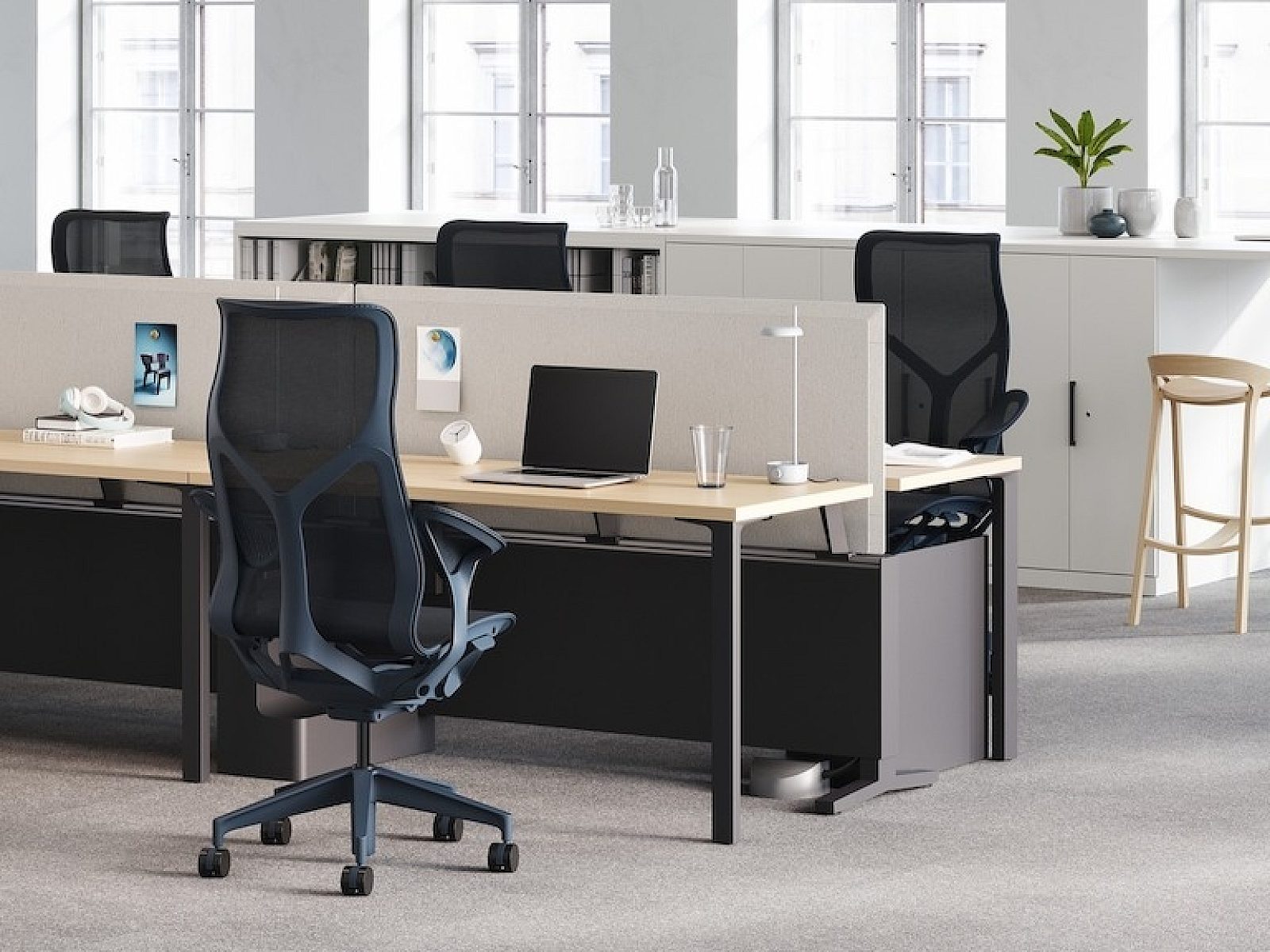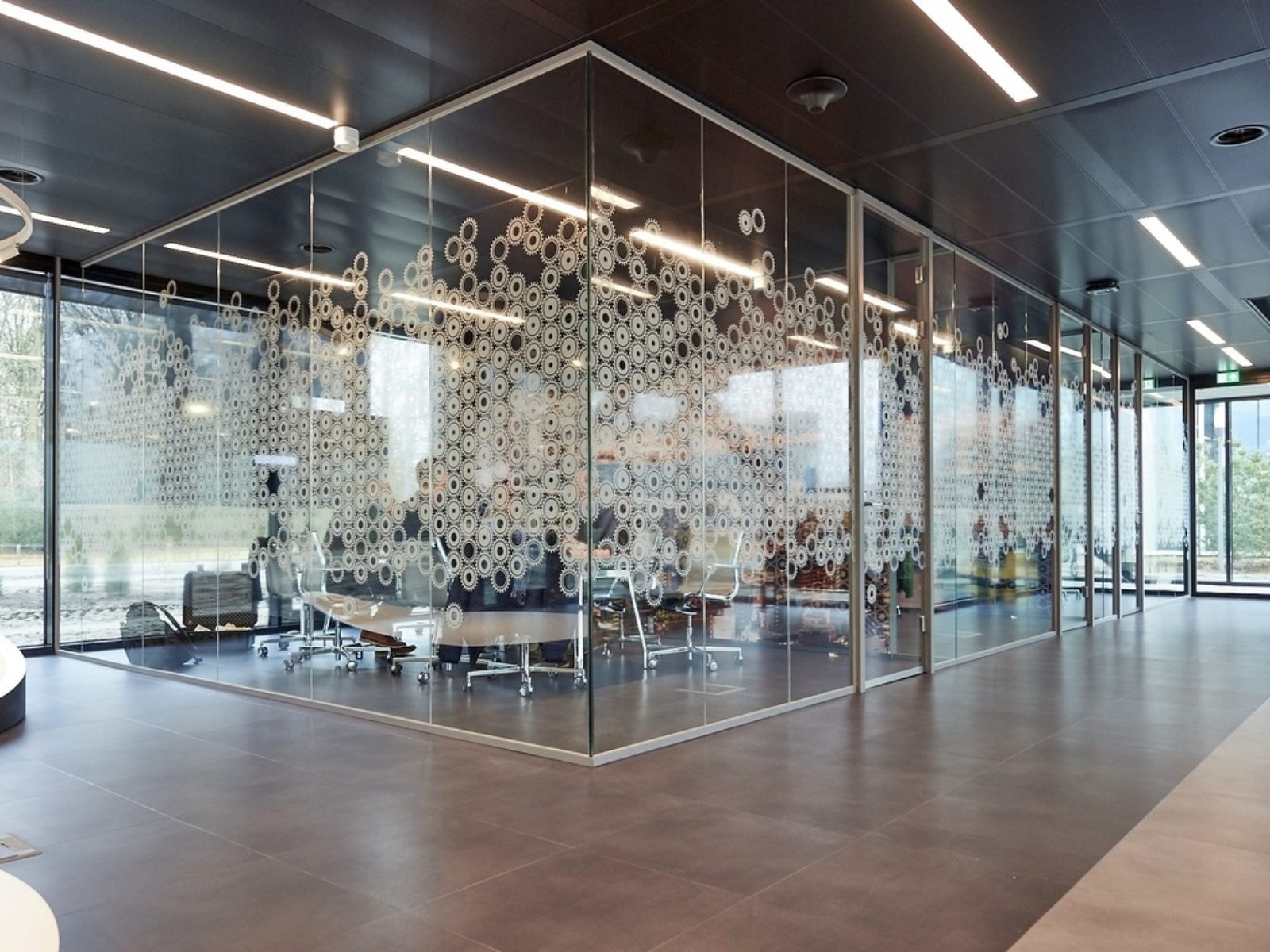Can a Comfortable Chair Help You Fight Office Stress?
Can a Comfortable Chair Help You Fight Office Stress?
The latest research from Herman Miller proves how the Cosm office chair can help you feel less fatigued, think more clearly, and be more productive.

Could a chair really help you work better?
That was the question Herman Miller set out to answer when they tapped the Texas A&M Ergonomics Center to collaborate with them on groundbreaking research that examined the effects a comfortable chair has on cognitive performance. When we typically think of ergonomics, we think of the physical aspects of how a chair interacts with the person sitting in it. But in this experiment, cognitive ergonomics became the focus—evaluating memory, attention, and cognitive flexibility (your brain's ability to easily transition between ideas or tasks)—essentially, how well a person could think in one chair versus another.

The Experiment
Together with the Texas A&M Ergonomics Center, Herman Miller researchers used cognitive neuro-evaluations—tests that focus on productivity and cognition—to examine participants' ability to think while sitting in three different kinds of office chairs: non-adjustable, highly adjustable, and automatically adjustable.
Participants wore heart monitors, which measured heart rate variability (HRV) ratio, and a fNIRS device, which measured blood flow in the frontal cortex of the brain, where decision-making and creativity occur. They performed tasks that relied on short-term memory, the ability to relax when conditions change, and cognitive flexibility—which comes in handy when you need to take a break from your expense report to answer an important email and then get back to those receipts.
The study included the following tests:

Flanker Test
The goal of this test is to measure participant's inhibition, or ability to act naturally and feel relaxed. They were asked to focus on the direction of the arrow in the middle of the screen and indicate which direction it was pointing when a new, arrow-filled screen appeared.

N-Back Test
The goal of this test was to measure short-term memory. Participants were show screens with a variety of different shapes in different positions, then were asked to recall the position of a shape from two screens prior.

Set-Shift Test
The goal of this test was to measure cognitive flexibility, or how your brain transitions from thinking about one subject to another, which is often associated with creativity. Participants were asked to look at a larger shape (circle or rectangle) that might be colored (red or blue) and match the shape or color.

The Results
The research showed that, when doing individual work, participants had a statistically lower HRV ratio while sitting in the automatically adjustable chair —Cosm—in seven of the nine tests. The lower HRV ratio indicates that the participants experienced lower stress and were therefore more relaxed while sitting in the high-back Cosm as compared to the highly adjustable and non-adjustable chairs. What’s more, the Set-Shift cognitive test results demonstrated that people made decisions more quickly—without losing accuracy—while sitting in a Cosm Chair, compared with other chairs in the experiment. Additionally, the Flanker test results showed that neural efficiency increased over time for people sitting in the Cosm Chair.

What Does It Mean?
The results have important implications for work, since a lower HRV ratio is better for short-term memory, cognitive flexibility, and the ability to stay focused even amid pesky office distractions—which are unavoidable in today's fast-paced, collaborative world of work. In fact, the researchers found that, over time, participants actually performed better (i.e., faster, better efficiency, and accuracy) on tasks requiring creativity when sitting in the high-back Cosm as compared to the other two chairs.
The Bottom Line
Cosm is the only chair known to reduce cognitive load, giving people more mental capacity for their work—and for the creative ideas to flow. That's good for people who want to accomplish everything on their to-do list, stress free, and for organizations that undoubtedly want the same thing. The beauty of Cosm is that it lets people focus on their work, not their chairs.
Enhance Your Space With Cosm
Interested in equipping your people with a chair that has been shown to improve cognitive function?















